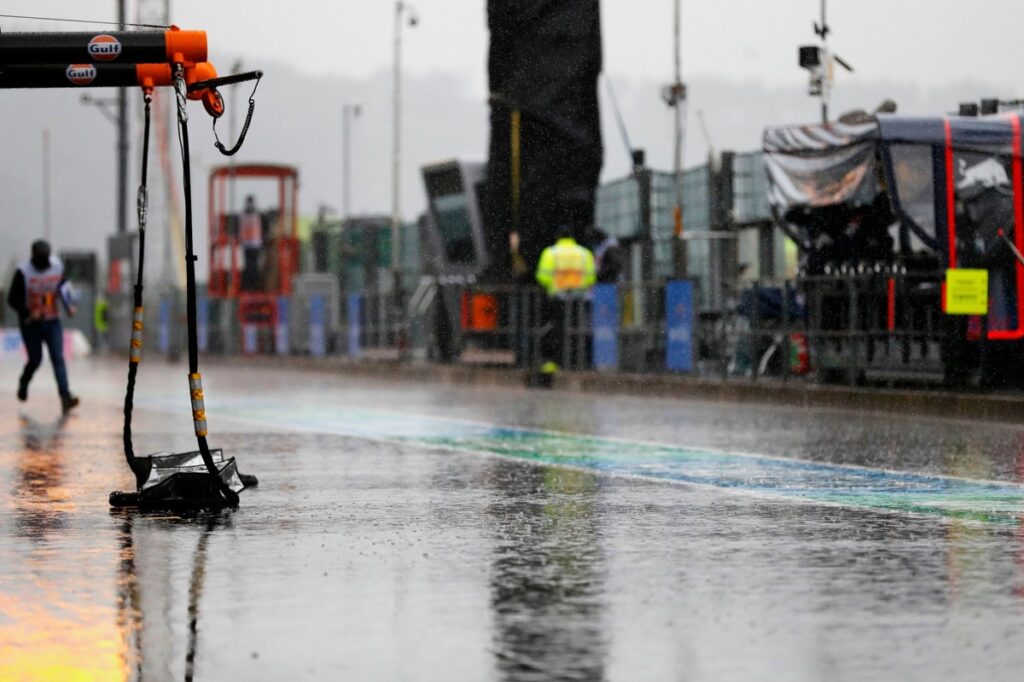A strategic experiment Pirelli has been preparing for since early May could be imperilled by the weather at this week’s Belgian Grand Prix.
The recent heatwave across north-west Europe has given way to a cyclonic low-pressure system pulling in rain from the Atlantic. Heavy, thundery showers are expected to deposit up to 50mm of rain in the UK, northern France and Belgium over the next four days.
When the opening rounds of the Formula 1 season unfolded along relatively processional lines, and the majority of teams defaulted to one-stop strategies, F1’s tyre supplier opted to ‘think outside the box’ for a way to introduce an element of jeopardy into the decision-making process.
Since the ‘family’ of tyre compounds is homologated at the beginning of the season and cannot be changed, creating jeopardy is a question of using the available compounds differently. So Pirelli elected to specify the C1 rather than the C2 as the hard-compound tyre for Belgium.
The medium and soft remain the C3 and C4, as they were last year.
“They [teams] always find a way to apply a strategy on one stop,” Pirelli motorsport manager Mario Isola said at the time.
Tyres will be a talking point at Spa – but the chat could be around wet compounds rather than dry ones
Photo by: Pirelli
“It’s not that we’re trying to push them to have a two-stop strategy because it’s better, it’s more action, more unpredictability and better races – but with the three compounds that are so close, they always try to use the hard and the medium to move to a one-stop.”
The theory is that by increasing the difference between the hard and the medium compounds, a one-stop strategy is likely to come with a lap-time penalty attached. Teams typically aim to stop just once because it preserves track position and minimises the likelihood of ‘finger trouble’ in pitstops.
In an ideal world, adjacent compounds would always offer clear-cut characteristics in terms of durability and grip. But track layouts and surfaces differ greatly, while variable weather can also affect performance.
Also, last year Pirelli was given a ‘target letter’ identifying key requirements for this year’s tyres. Among the stipulations was that these should be less sensitive to thermal degradation so that drivers could push them harder, for longer.
Pirelli has delivered on this, but that success has come freighted with unintended consequences – chiefly a shift to de facto one-stop races. Convergence in car performance has made overtaking harder to achieve, and processional races have ensued.
By introducing this compound ‘step’ on a sprint weekend, Pirelli hoped to add further complications around tyre choice. But while Spa’s challenging, high-speed layout suited a plan to evaluate a step in the harder compounds, the Ardennes weather has always been fickle.
If rain disrupts proceedings, as it did during the Miami weekend, an interesting race may eventuate anyway – but Pirelli will have to try its experiment again elsewhere. This is a more challenging process than casual observers may believe, since it isn’t a case of randomly substituting one compound for another.
If there is too big a difference between compounds then the outcome is the same as if the gap is too small – teams will coalesce around similar strategies. Belgium was viewed as the ideal location for the experiment, but if it can’t happen here, the options are running out.
In this article
Be the first to know and subscribe for real-time news email updates on these topics
Subscribe to news alerts
Read the full article here

